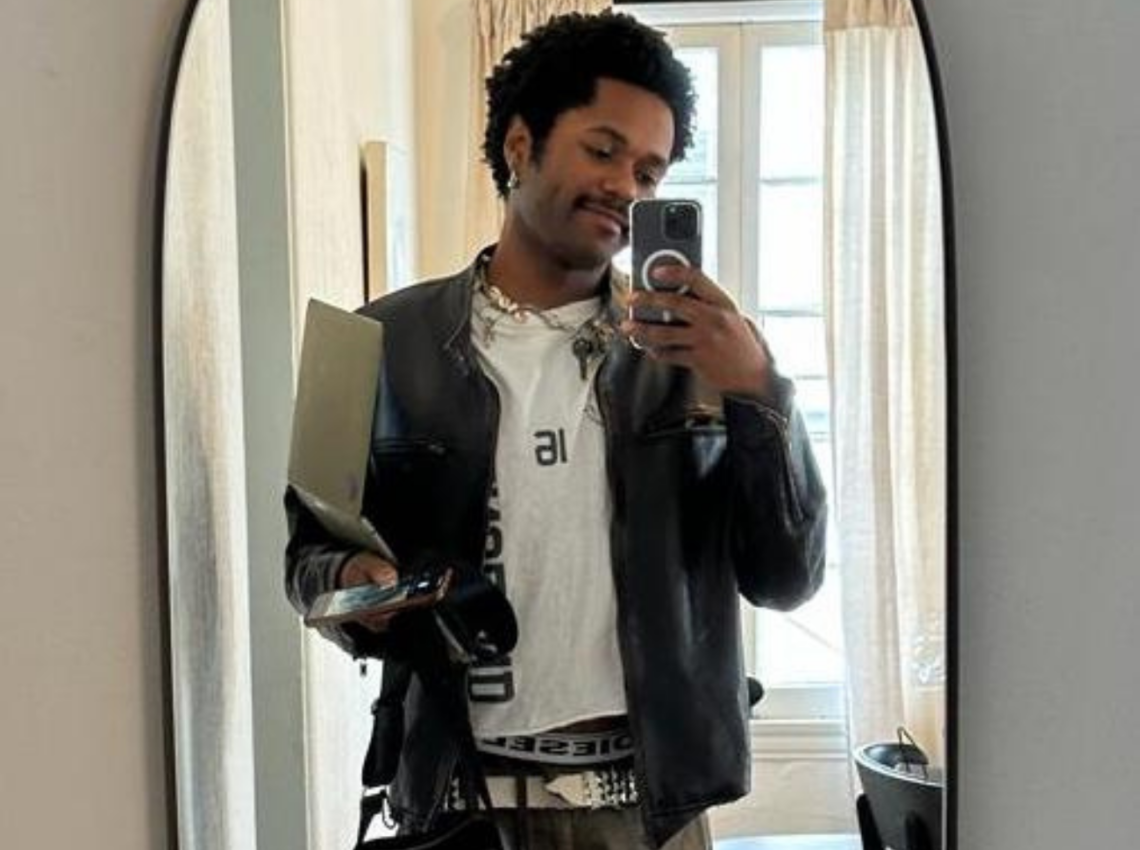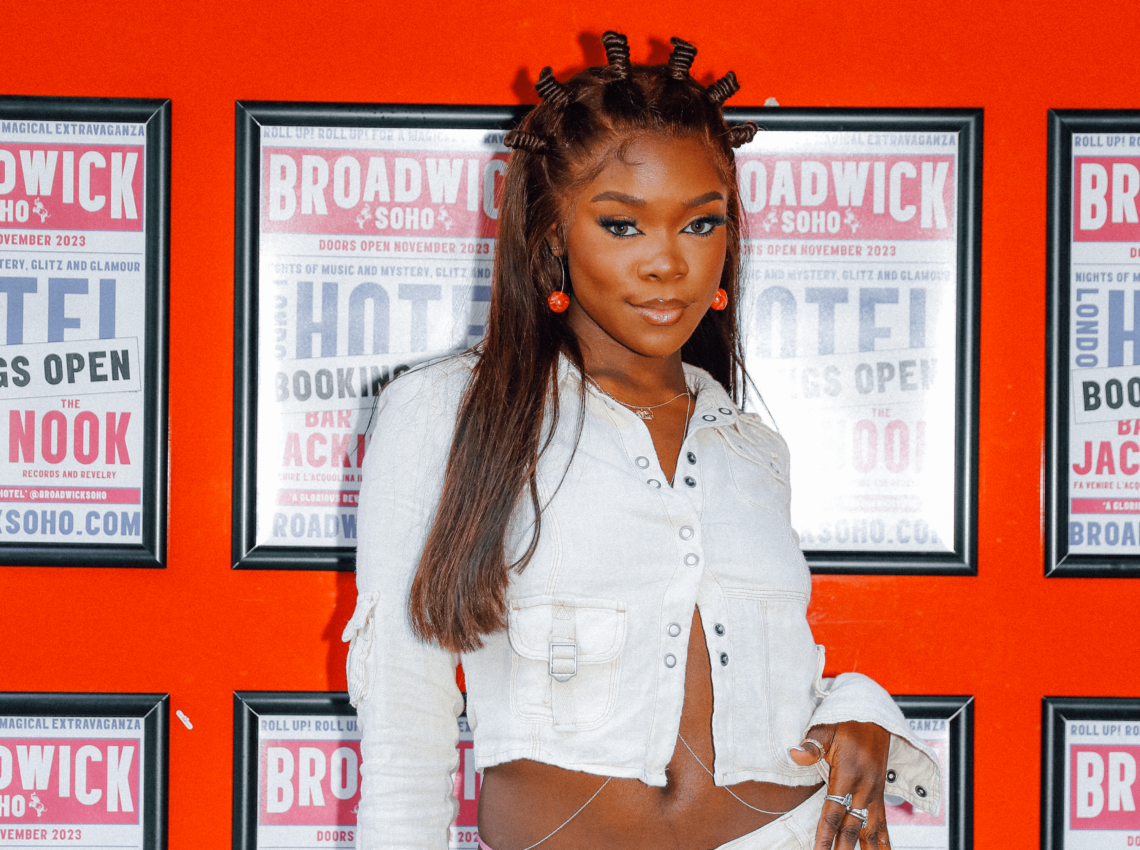In Conversation With Stylist Rudy Betty

Earlier this year we looked at 3 stylists to watch in 2023, who I predicted were going to do amazing things. Now that it’s the end of the year I’m looking back at other stylists that made waves this year. I spoke to some established stylists with different backgrounds and work styles about their journey, what they wish they knew when they started, and what’s next.
For the finale of this series, I sat down with Rudy Betty. Congo born, Lyon raised, London developed and now Paris based; Betty’s story is proof that saying yes and being open to opportunities is a great way to find out what works for you. While studying translation at university he got the opportunity to do a year abroad in Birmingham, UK and he found himself in London every weekend. Fast forward and Naomi Campbell was his first solo styling gig, and he has also styled Kai Isaiah Jamal, Ebon Moss-Bachrach and Dina Asher Smith to name just a few. While he went down the more traditional route of interning and assisting, his journey and therefore styling identity is far from ordinary.
JR: You’re from Lyon, studied for a year in Birmingham but decided when you returned to the UK to choose London as your UK base. How has London impacted your fashion journey?
RB: London or being in London definitely influenced my styling. But also, I think, my awareness of visual identity. Because before that, I guess like all of us, I am a child of MTV, pop culture and all that. So it was always something that we had in us. From an early age, I was so interested in pop culture in general, because all of my heroes were part of pop culture. I think being in London, literally, I understood the words, but didn’t understand the visuals, so London taught me the visuals. Just walking in the street, being in London, dressing differently, different experiences, and experimenting, but also, the history of fashion in London, which for me, was the core of my passion and interests. Because, obviously, you always think of Paris and, you know, the legacy of fashion and culture in Paris. But I remember even Carine Roitfeld, who was at the time, the editor in chief of Vogue Paris, whose work was very French, like the way she styles and the visuals. She used to say that every time that she had a lack of inspiration, she would come to London. So for me, it was actually the reality of being in London and experimenting and seeing how people in fashion but also outside of fashion, were living and dressing.
And also, I guess, on top of the experimenting that I was seeing, was just the fact that nobody cared. So going from France, for example, coming from an African family, but also growing up in France. The “you can wear whatever you want. No one cares.” London energy was mind blowing. So, I think that sharpened my visual aesthetic. Just the idea of audacity, but also that fashion is not something that just exists in the pages of magazines. It’s literally real life.
JR: That’s so interesting because [us] Londoners have a bad reputation of being unfriendly and unwelcoming but I guess you found that as freedom to express yourself
RB: For me, I never ever got that side from London. For me it was like welcoming in a way that I was also able to welcome my authentic self. Which I’d never experienced before and I was in my early 20s, so it was my formative years when you’re trying to find yourself. I always love the fact that when people do look at you in London, they will come and say yeah, like what you’re wearing. They don’t look at you because what you’re wearing is weird, even if their style is the opposite of you. They’ll compliment your style and then keep walking. Which I find really cool.
Right now I’m based in Paris and London is only two hours away on the train and yet the culture is so different. Such a stark difference between how people look at each other, or how people talk to each other. And actually, that thing of saying, “oh my gosh, I love those shoes, they are amazing” I literally learned from here [London]. And that’s something that I’m trying to keep in my life, even outside of fashion.
JR: You do a variety of styling, from red carpets, editorials to campaigns. How if at all does your process change across these types of styling?
RB: I believe styling, what we do in general is like character building. We literally create characters or build upon/emphasise some parts of a character. With an editorial for example, you literally build the character(s) from scratch. Being in London, but also just like maturing finally, I have come to understand that beyond fashion, what I really like is people, so the person is always at the centre {of my work}. When you create a story, you create a character but it’s based on an imaginary person. It’s always a person. If I work with a celebrity or a personality or someone for red carpets, they are at the centre. I develop something around them, but it’s always by using a personal database. So I would say I don’t think my processes are that different in that sense. In campaigns, it’s a little bit different because obviously, the focus is 100% exterior, so you have to go with it. But for the most part, the person is what motivates and inspires me. So I would say , it’s more or less the same.
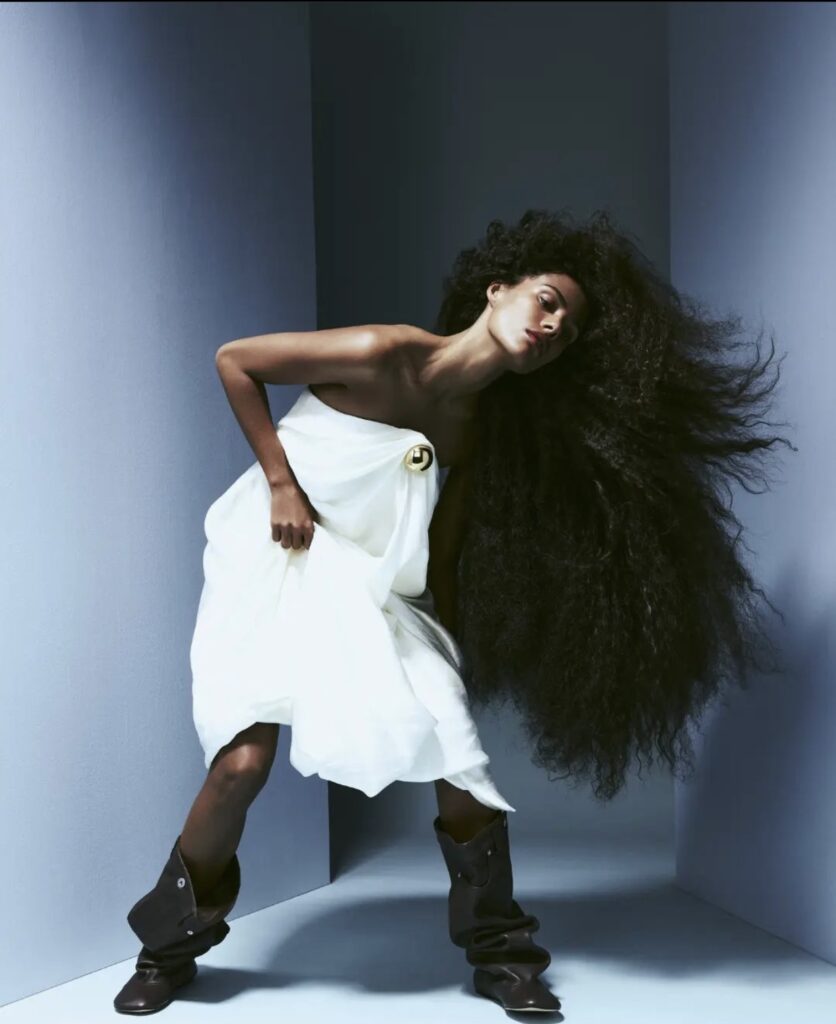

JR: So people and working with people and character building is your favourite part about styling?
RB: Yes, I’m obsessed with the person. With people, I find people so interesting, intriguing and layered. I love how even now I’m talking to you, I’m just looking at that barista working, and he has the craziest job. But everything makes sense, the way that he works. Also, I’m heavy on collaboration, because the idea that the stylist is, you know, the mastermind and all that, is absolutely not true. For me, it only really works when there’s a collaboration between the people you’re creating images with, and/or the person that you’re styling. My proudest work is always when I feel like the synergy between me and the talent is genuine and strong, that we are a team, working together. So yeah, the person is always at the centre for me. Always.
JR: If you could go back to your first year of styling what things did you wish you knew or did differently?
RB: It’s okay to make mistakes. It sounds so cliche. But I remember for example, even with just assisting, it’s okay to not know exactly what you want to do. As long as you’re there for the right reasons. I feel like fashion, even more now, it’s such a vast world that you can be one thing one day, another thing one day, and it’s ok. The industry opens up more than it shrinks. I knew that it was okay to take time to figure out, ok Rudy, what’s your visual language? What do you want to do? What are you expecting from this career? How do you want to express yourself? How do you want to challenge yourself? How do you want to engage with people? I wish somebody told me that it’s okay if you haven’t figured out exactly where you want to go as long as you’re in it, and as long as you’re working. Because by doing the work you will look into what you want to do, and also what you don’t want to do, which helps you figure out what you like. I was always looking for mentors, for someone to tell me what I should do? What I should love. You find out that even the people that you admire, they actually make mistakes all the time. It’s part of the process of growing and learning. I was really big on saying I’m not good enough. Then I realised that it’s not about the mistake, it’s how you learn from the mistake.
JR: At the end of the day fashion is important yes, but mistakes will be made
RB: That’s the thing. Also because it’s at such a fast pace. One thing that I will always remember being told early on, is to have a sense of urgency. When I prep a job, for example, it’s really funny because I get myself in a mode. I’m a very calm and peaceful person. And I try to always stay calm and peaceful, but maintain a sense of urgency. That’s something that I didn’t have before and I learned to develop, respect and hone it, but to thrive from it and not to let it hinder you. But that’s also what makes mistakes feel so big. You’re so tunnel visioned that anything feels like it’s the end of the world.
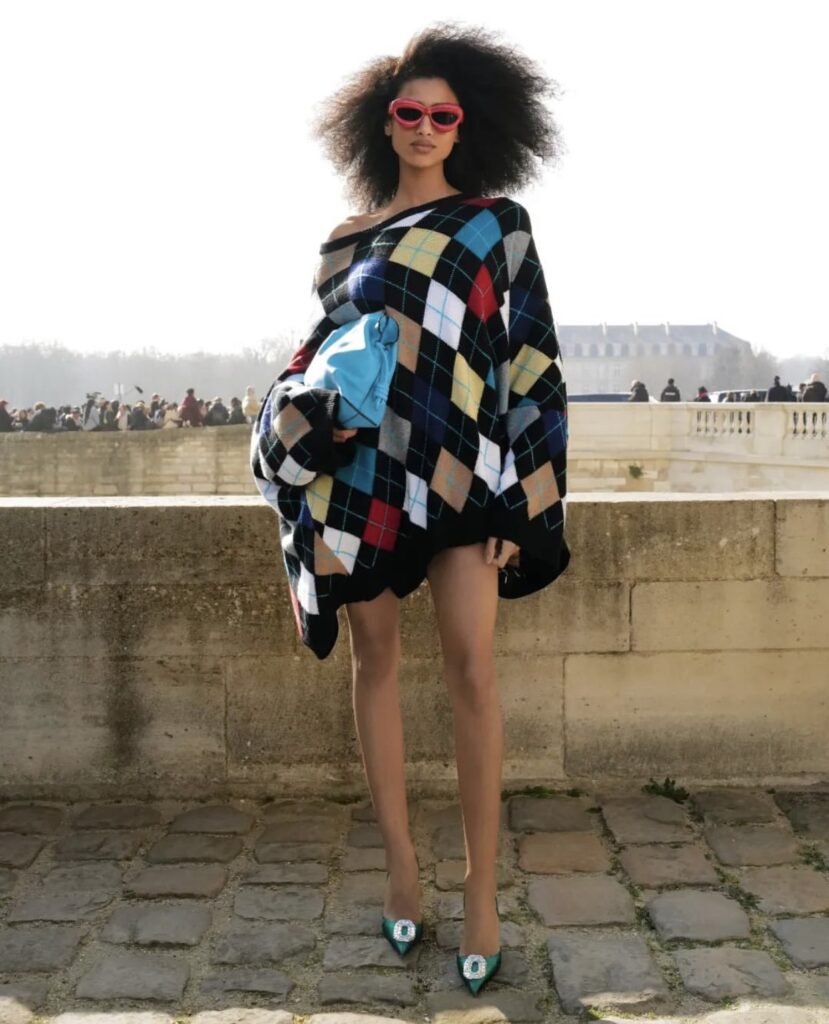
JR: Stylists have been the backbone of the fashion industry for years but recently now more than ever the idea of what a stylist is and does is becoming mainstream knowledge. Some people see this notability as a positive, some see this as negative. How if at all has this increase in visibility of the styling industry affected your work?
RB: This is such an important question. Especially as you say, how the culture is now, more and more people are aware of just the existence of a stylist, outside of the fashion circles. The great part about it is obviously, more people know it’s a job so it feels even more like it’s an actual job. People understand what you do. Thinking of my younger self, looking at magazines, I never thought that it could be a job. I’ve always loved magazines, flicking through them, the covers. When you start to realise that there’s a person, there’s an intention behind it all, it feels more special. For example, Law Roach calls himself an image architect, and I think that’s a great description of what a stylist is. I like that there’s more understanding of the knowledge, why stylists are needed. So now there’s more exposure, more opportunities and more understanding that we all benefit from. I was on the Eurostar week going to Paris, and security pulled me aside and because of my three large suitcases. I said I was a stylist and he understood. That’s the evolution of the idea of a stylist. The growth has allowed stylists to create personal brands, it’s added value to our work and increased opportunities. I really enjoy this part, like this interview, I’m enjoying it.
However, being a stylist is also about being comfortable being behind the scenes. A large part of the job and the early stages you don’t see online, so people come into the industry not understanding how much hard work it actually is. That’s what I love about doing this job. I love what’s happening behind the scenes. I love the prep. I love creating these worlds. I always say it’s about work. It’s about knowing that we are behind the scenes, and being comfortable with it. I’m very comfortable being behind the scenes and knowing that the talent, is the talent. The stylist’s job is to bring light to the talent.
JR: So you’re seven years in now, what can we expect to see from you?
RB: What is the future? I don’t know. That’s also one of those questions that could go anywhere. I want to learn. Where I am right now I just want to keep on growing, keep on learning, keep on expanding in all the ways that you can think of. Keep on producing work that is true to myself. Keep on creating worlds around what we do. Creating spaces where it feels like people are welcomed, invited and respected. And really own it. Maybe one day teaching, I’d really love to give back and be that mentor that I spent my early years looking for.

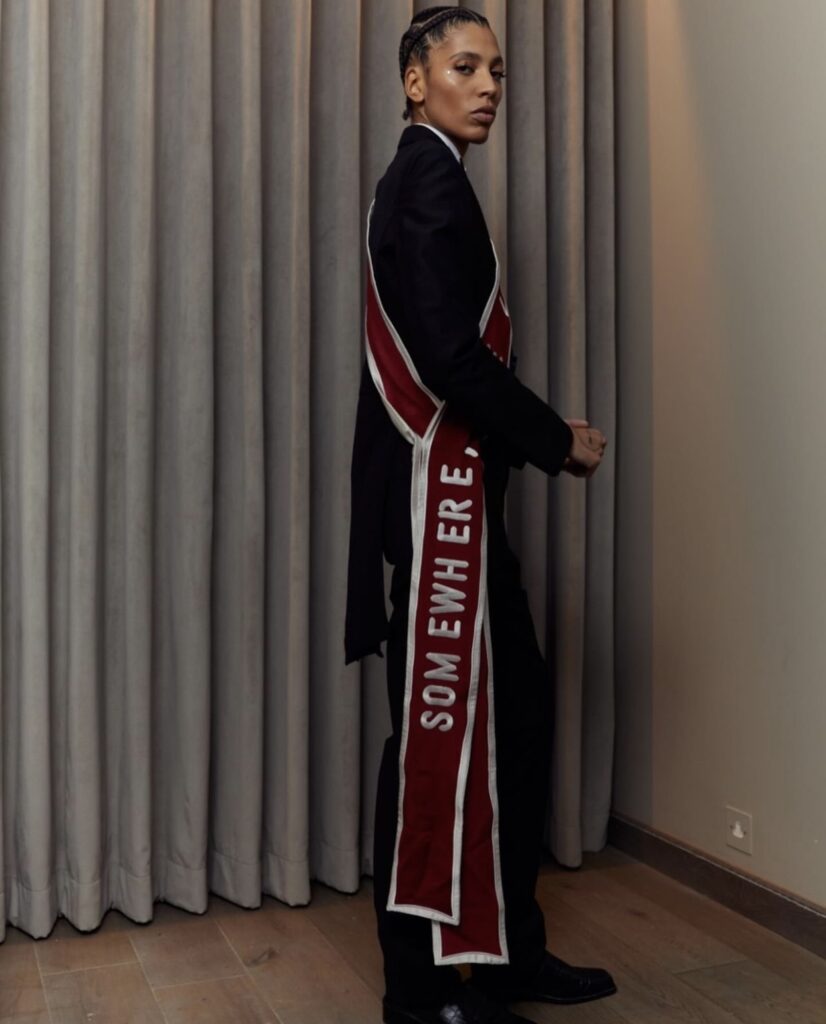
JR: So, trying to focus on giving back to a younger version of you?
RB: Yes. To share and transfer, whatever knowledge or experiences I’ve had with someone else. I’m really, really big on inspiration because I know the people and the moments that inspired me. I find it really crazy. I feel like being in a position that I can inspire someone, for me, is like the biggest compliment ever. Because that’s what I’ve thrived on – being inspired by people, their career, their journey. Even to do this interview, talking about my job to someone. I would have never believed it. This is really wild to me.
Rudy Betty is extremely hilarious, warm, passionate and a joy to speak to. It’s so clear that his warm personality when paired with his passion for people has led him to have such an amazing career so far. His anthropological approach to fashion is clearly derived from his multi-cultural background and his high appetite for learning and new experiences. It’ll be fun and intriguing so see what we get next from him.




![ZINO VINCI’S ‘FILTHY & DISGUSTING’EP BRINGS YOU TO THE CORE OF THE ARTIST [@ZinoVinci]](https://guap.co/wp-content/uploads/2023/10/Zino-4.jpg)

